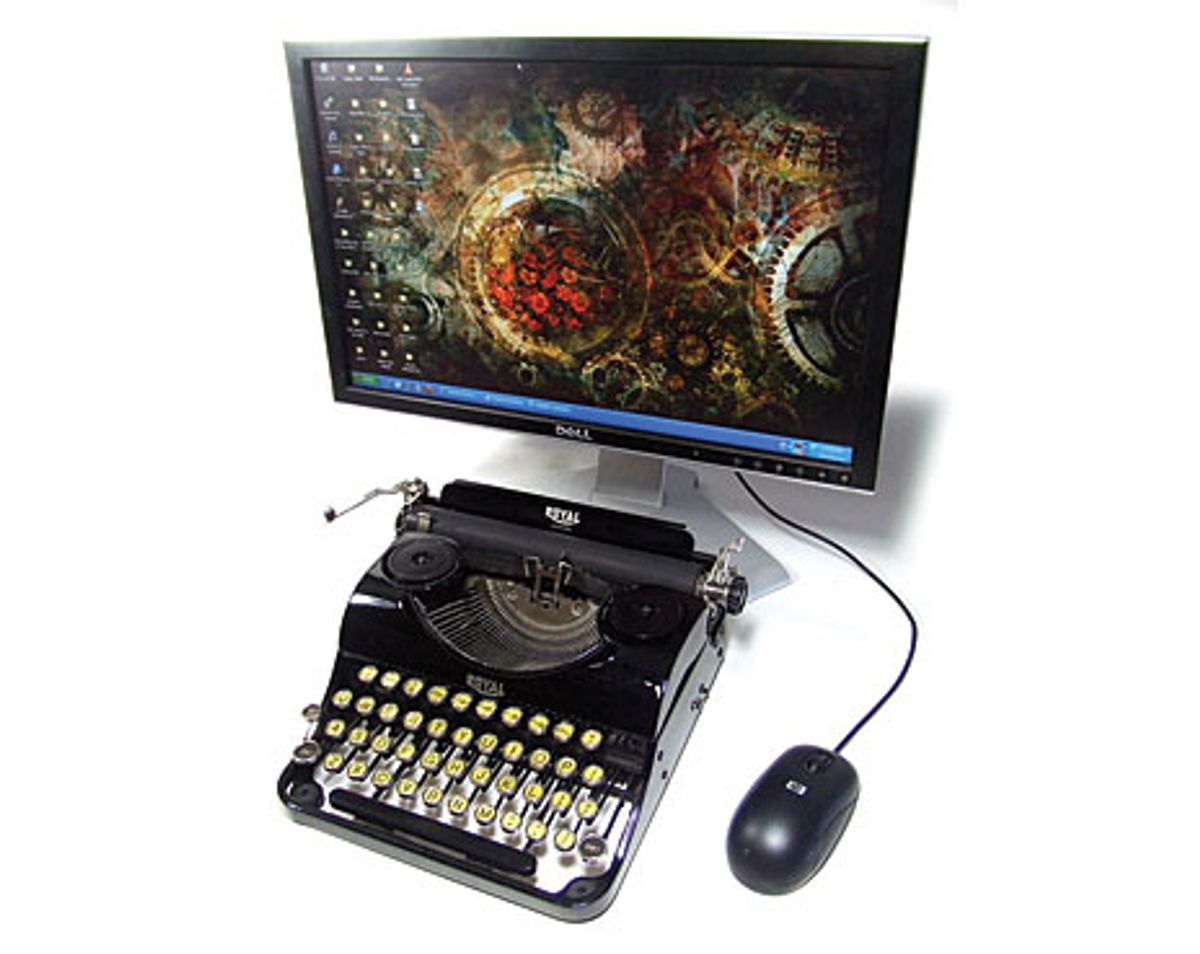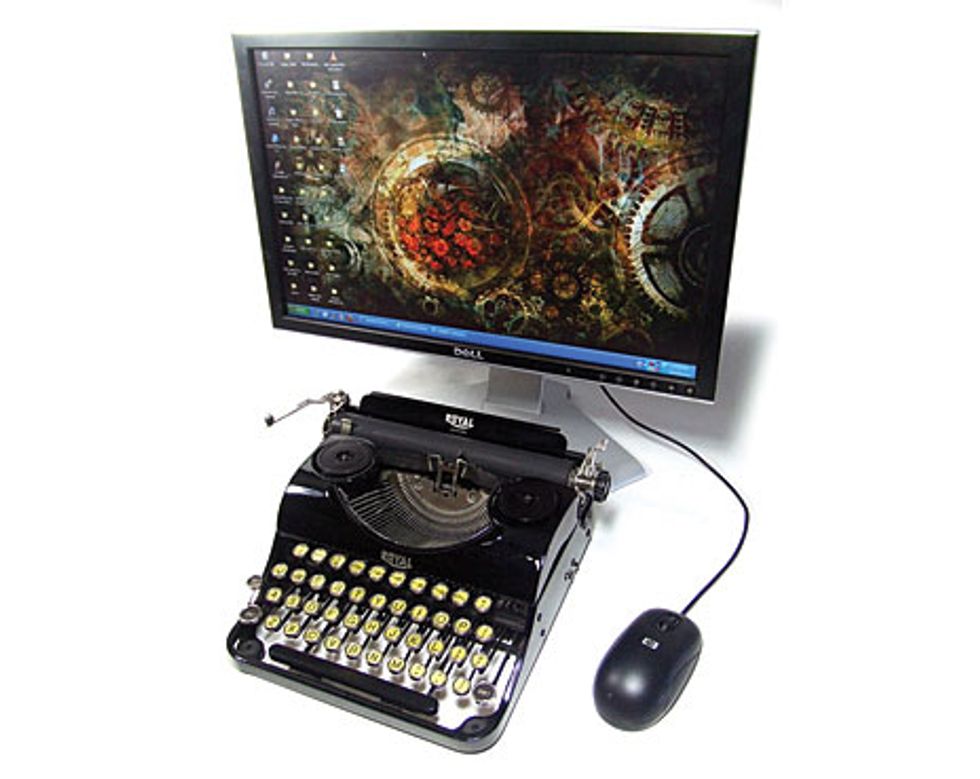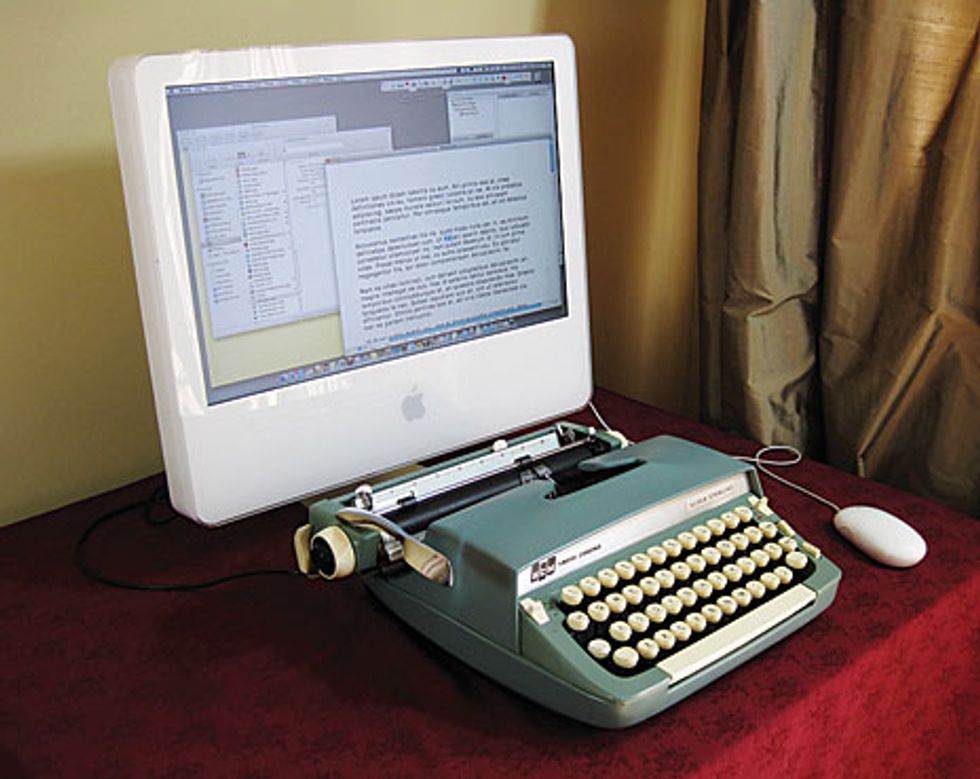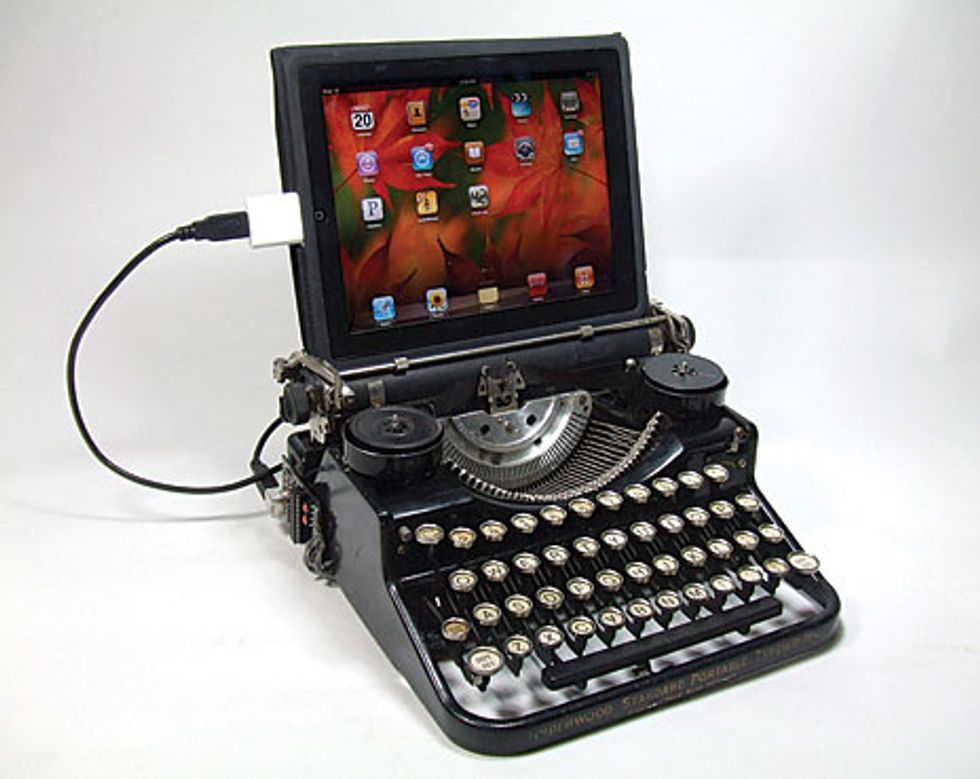In the 1940s, my mother tapped out her college term papers on what was then a snazzy new Royal typewriter. In the 1970s, she gave it to me for my high school essays. I, too, may pass a manual typewriter on to my kids, but with a twist—a couple of circuit boards bodged to the bottom and a USB cable coming out the back. An obsolete manual typewriter can thus be reborn as a computer keyboard.
It's the brainchild of Jack Zylkin, a Philadelphia-based electrical engineer who has designed a kit that makes the conversion reasonably easy for anyone who enjoys hands-on projects. Zylkin spent the better part of a year refining his creation at Hive76, a local workspace organized by hackers of various kinds. The typewriter modification is based on an Atmel ATmega168 microcontroller board, a pile of shift registers, and several dozen hand-hammered leaf-spring contacts.
Here's how the computer attached to the typewriter knows which key has been pressed: When a letter is typed, the key's metal support bar touches a single contact on the board. Meanwhile, the microcontroller is stepping a single logic "1" down the row of shift register pins and thus the leaf-spring contacts wired to them, letting the microcontroller detect the circuit made between the typewriter and the board. Then, like any other USB keyboard controller, it sends the appropriate code back to the PC. A few strategically placed magnets and reed switches detect the shift key, carriage returns, and whatever the user wants to configure as Alt or Ctrl.
Why use shift registers instead of the switch matrix buried within a modern keyboard? Because ordinary humans can build it. A matrix would need fewer components and perhaps less code, but it would require either putting the microcontroller on the same board as the contacts (a tough fit inside some typewriters) or soldering more than a dozen wires between the two boards. The shift registers take only four wires. "The other advantage," Zylkin notes, "is that unlike some kind of matrix, the shift registers form a repeating pattern that can be cut to any length." So regardless of how large or small your manual typewriter, his board can be chopped to fit inside with no electrical repercussions.
Assembling the kit is fairly straightforward. There's a lot of soldering (40-odd contacts plus eleven 16-pin ICs), none of it particularly fussy.
The only unusual step is making the leaf-spring contacts yourself by flattening the leads of two dozen half-watt resistors with two hammers or a hammer and an anvil. Zylkin says that there are no easy sources for the kind of copper or phosphor-bronze strips that you can expect to use for making contacts. (As this article goes to press, Zylkin plans to phase the resistors out: "I'm taking your advice and moving away from resistor leads for the electrical contacts. From now on, the kits will use chemically etched brass strips for the contacts—no hammering required.")
After a while, the rhythm of the work becomes almost automatic: Hold the resistor body while you pound a lead flat on the anvil, turn it over to flatten the other side of the lead, flip end-for-end to do the other lead, pick up another resistor, and so on.
Separately, you solder wires to some reed switches and wrap them in heat-shrink tubing to protect their fragile glass. Then, for example, you can mount a magnet on the carriage-return lever and one switch right next to it on the body of the typewriter, so that when you pull the lever the magnet closes the circuit and notifies the microcontroller that you've done the equivalent of pushing the return key.
Zylkin found that he needed to give special thought to designing a kit for do-it-yourselfers because some parts aren't easily found, while others would be hard to incorporate. It would have been nice, for example, to use off-the-shelf USB or Bluetooth ICs to handle the keyboard's communication with the rest of the world, but such chips are surface-mount only. Zylkin sells modified typewriters as well as kits and will modify typewriters sent to him. He recently left his corporate engineering job to build and sell retrotechnology full-time.
So what is this retrokeyboard like to type on? For many of us, it'll be more comfortable than a modern-day one. Remember, manual typewriters were
designed to be operated entirely on finger power for hours every day, and the key travel needed to reach contacts is only a fraction of the distance required in the old days to slam a type bar onto the platen. Now if only someone could go the other way around and build a CPU and some mass storage into the rest of the typewriter.
To Probe Further
Zylkin’s kit can be purchased directly or through Etsy.com. An enterprising hacker built on Zylkin’s work, adding a rack of solenoids to an electric typewriter so that it can produce output as well as accept input.



